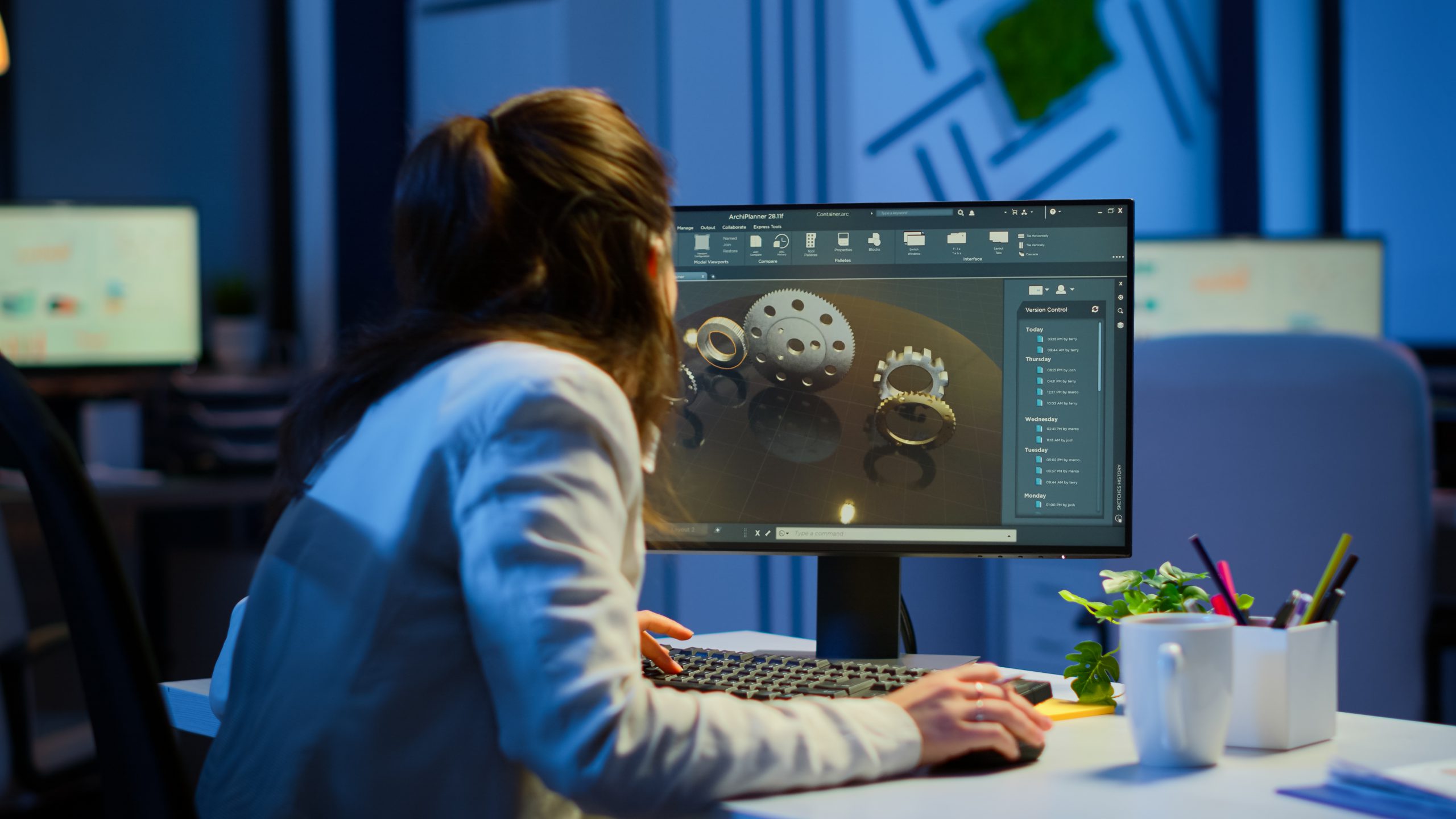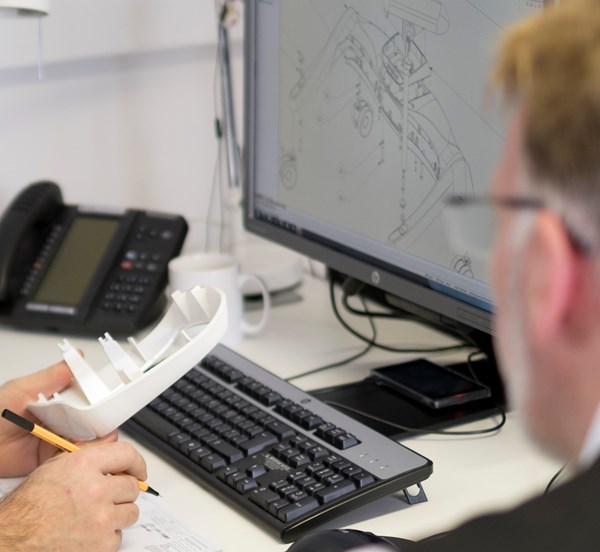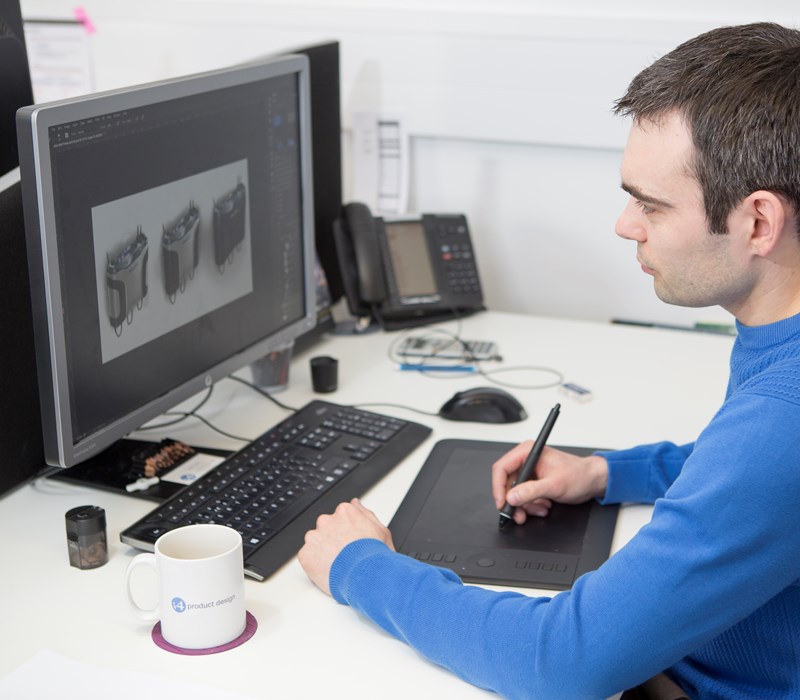How Manufacturing Made Smarter funding helped i4 Product Design succeed with their advanced technology project

Innovate UK Manufacturing Made Smarter funding has enabled the development of an AI-driven manufacturing cost estimator and digital supply chain technology.
On 4th June 2021, KTN met with i4 Product Design for an interview. i4 Product Design has over a decade of experience in designing products for injection moulding manufacture and has recently received funding from Innovate UK to develop novel software to address this need.
During the interview, Reg Harsley, Systems Analyst at the company, who is responsible for software development for i4 Product Design, discussed how the Innovate UK feasibility study played a crucial role in the success of their project, and how KTN’s Made Smarter Innovation Network helped.
Who are i4 Product Design (i4pd)?
We are a team of 20 creatives and engineers with a passion for product design. i4pd is an employee-owned product design and development consultancy where people come to us with their idea, and we make it into a reality. We’re just over 17 years old as a company and traditionally we have done a lot of design in different plastics e.g., the enclosures around a product. We work on medical devices as well as industrial equipment. More recently, we have been branching out to provide other services such as software and electronics – so we’re covering the whole range of requirements needed to build a product. We have directly contributed to the development of over 200 products to date.
What Innovate UK funding did you apply for and how did you use the funding?
We applied for the ‘Manufacturing Made Smarter: Feasibility Study’ so one of the key aims of this particular funding stream was to improve supply chain capabilities and also enhance manufacturing capabilities in the UK.
As product designers we have to project costs quite a lot for clients that come to us with a product idea and they’ll ask us, “can we design it?”, and they also ask, “how much does this cost?”, because knowing the cost of something is very important to whether a business idea is successful or not. It is not just about something being a good idea, but it also must be both financially viable and profitable. Projecting costs is an important task to do, and we highlighted two key areas where projecting costs is important. The one that people maybe know the most is when you have the product all designed and you’re ready to get it manufactured; you might get quotes from different vendors, and you might have conversations about 3D CAD (Computer-aided design) to have an estimated cost which is fairly good.

What we are developing is a tool to help people to identify right at the very start of a project how much it is going to cost them to make, because you could go down that entire design-to-manufacture journey and you get to that quote stage before realising, “this is far too expensive”, and you have essentially wasted a lot of design-time doing it. Whether that is wasted through killing the product at that stage, or, you must go back and do a lot of re-design to try and match these costs. We identified these two key areas and we thought about how we can automate this process, and this is where it links into the supply chain for smarter manufacturing. One of the key elements of the project is that we are developing these automated estimation tools for use at the earliest stages of the design process. There are two automated estimation tools that we are developing, and the idea is to make these tools available not just for i4pd, we want to make them available to the wider design community so we are going to implement them in a procurement portal. Designers will be able to upload their product information to the portal, the estimator will be able to give them some automated feedback and we will also link this portal with vendors as well.
The idea is that we can better link people together, rather than having buyers having an individual group of vendors that they must go to. Now, we are trying to make it easier for buyers to connect with vendors, especially new vendors that may be just coming out and do not have access to the many contacts that some of the more established manufacturers have. One of the key issues over the last year or so has been how can people make these new connections when all the conferences have been made virtual or haven’t even happened in the first place? By introducing a platform that will better connect designers and vendors, this will also help designers better forecast their costs or make changes early in the design phase for the first time. These were things that the Innovate UK Manufacturing Made Smarter feasibility studies funding to develop AI-driven manufacturing cost estimator and digital supply chain technology in addition to the Scottish Enterprise Smart Award for batteryless product design were looking for and our solutions ticked all of the boxes.
Why did you apply for Innovate UK funding?
We did quite a lot of fundamental research into this area. Although we didn’t approach venture capitalists and investors for this, I think we thought that they would probably not touch this project because it’s quite a high risk from their perspective – they are looking for a pretty quick return on their initial investment. It also builds on a lot of EFAs internal experience. There’s a lot of intellectual property linked to this project, or, “trade secrets” if you will. I suppose we don’t necessarily want to be giving that away too. I also think, because we selected this kind of funding stream, there was quite a high priority on collaboration, and it really helped us when selecting our partners that contributed a lot to the project.
What made your feasibility application unique?
I think one of the things from the feedback i4pd received on the application was that it was a complex problem that is known and needs to be addressed. I think we picked a good problem to work on because people feel it needs to be addressed. We also picked great partners to collaborate with which included Houston We Have for developing decision AI, The University of Edinburgh for data-driven design, BOC for their industrial gas supplier expertise and McLaren Plastics for the injection moulding capabilities. It wasn’t just a case of bringing these people in for the sake of it, they all contribute very specific things. If one of these partners tried to do it on their own then the project wouldn’t be a success. I think it is a case of the project team is greater than the sum of its parts. I think we picked our partners very well.
One of the things is that we also have a good link to how we disseminate things, and it wasn’t just a case of “let’s make a nice tool for i4pd to use”. We hit the brief on how we disseminate and also because we look at addressing quite a few different things, like how can we get manufacturing back to businesses? Because we’re developing automated tools that analyse product requirements, we were also able to start looking at how we could nudge designers, or give them more information, on environmental issues. I think the platform itself allows for making designs more environmentally friendly, so we can put nudges in for asking, have you considered using recycled plastic or some other process that is more environmentally friendly? This way, we can get that information to designers early on.

Why did you choose this project when applying for the feasibility study?
This was a short feasibility study and I think we were quite sensible with the scope of the project that we picked. The team focussed on automating injection moulding. We didn’t try to tackle everything in just six months, and we didn’t pick perhaps one of the simpler processes to quantify costing like CNC machining or 3D printing. So we tackled something that was both complex and hadn’t been done to satisfactorily level before. We could still make some useful progress within the time frame, and I think scoping was a very, very important item when we were planning it. In an effort to achieve everything, I think we were very pragmatic with our scope and I think that helped with the application. We were very sensitive to what could actually be done within the time frame.
Why has i4pd joined the Made Smarter Innovation Network?
We joined the Made Smarter Innovation Network and attended several of your events as It is currently very difficult for people to make new connections in the manufacturing space due to the pandemic. It’s really important that there are networks like this that are able to bring people together whilst some sectors are still working from home. Furthermore, as part of the funding, we must disseminate both the research and the work somehow. I also think that by broadcasting it to a wider audience, we could potentially get some valuable feedback and find out more about what people as well as businesses within the design and manufacturing communities want.

Why did you speak recently at the Made Smarter – Innovation Network: Design for Manufacture webinar event?
We were speakers at the Made Smarter – Innovation Network: Design for Manufacture webinar because it allowed us to share insights on our product’s development and connect with people in the manufacturing community. We have recently created a short buyers survey and vendors survey for those working in the space and would be most grateful if you can help shape our product’s development by completing it.
More information
Please email rharsley@i4pd.co.uk for more information.
Related Opportunities
Driving the Electric Revolution – building talent for the future
Opens: 09/08/2021 Closes: 15/09/2021
UK registered organisations can apply for a share of up to £250,000 for innovative skills, talent, and training projects. This funding is from the Driving the Electric Revolution challenge.
More Information
Related programmes

Made Smarter Innovation Network
From 2020 to 2025, Innovate UK Business Connect will be working on behalf of UKRI to join communities together to transform UK manufacturing. Join the Made Smarter Innovation Network and help us drive positive change.

Navigating the Design to Manufacture Journey
Navigating from design to manufacture can be challenging. Translating an idea from a design into manufactured reality requires skill, expertise and tenacity.



